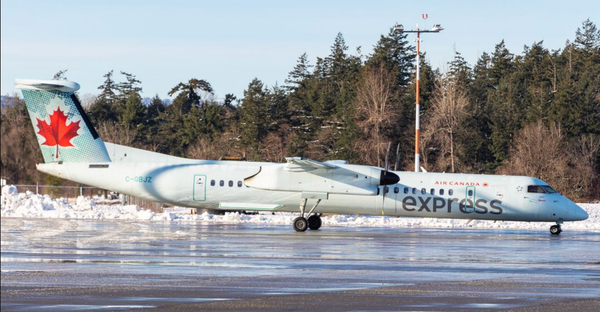Turbulence. Chances are that if you have ever taken a flight, you have faced turbulence in some way, shape, or form. There is no question that turbulence grabs the attention of everyone onboard a flight, some may enjoy it while some may be petrified.
Whatever your view on turbulence is will impact how you take the following news: turbulence is expected to get more common and intense.

Bumpier Flights
Firstly, let's introduce the idea of "clear-air turbulence". This type of turbulence is the most dangerous type because it can happen without warning.
Usually, aircraft instruments cannot predict clear-air turbulence, making it extremely dangerous. It can happen without warning. No bad weather or high wind is needed for clear-air turbulence to occur.
This type of turbulence is caused by wind shear. That is, sudden changes in wind speed usually associated with the jet stream. Isabel Smith, a meteorology Ph.D. student at the University of Reading in England, told Business Insider that clear-air turbulence has jumped 15% since 1979.
This is due to climate change. As greenhouse gas emissions like carbon dioxide increase, global temperatures as well. This causes the jet stream to carry more wind shear which, in turn, causes more turbulent conditions.
Paul Williams, professor of atmospheric sciences and advisor of Isabel Smith, found that clear-air turbulence in the Northern Hemisphere could triple in the next three to six decades. Therefore, as carbon emissions continue to climb and permeate our atmosphere, so too will turbulence.

Dealing With More Turbulence
The ability to predict the location, timing, and severity of turbulence has improved with technological advancements. This means that airline dispatchers can better route flights to give them the smoothest paths possible.
While clear-air turbulence can never be precisely predicted, dispatchers can use improved weather and turbulence prediction strategies to better route flights through areas that may least be impacted by it.
Artificial Intelligence, better known as AI, is a key player behind these improvements. By implementing machine-learning algorithms, flight dispatchers can better plan flight routings.
Such algorithms can find relationships between historical weather and turbulence observations. Those same algorithms can be run using the latest weather forecast to identify hazardous turbulent areas.
How will this affect passengers?
With the risk of increased and more severe turbulence on the rise, flight crews will have to be more cognizant of when inflight services should take place. As such, this may cause meal services to be canceled or curtailed (shortened) on specific flights.
Furthermore, the ability for passengers to get up, walk around, and use the restroom might be restricted as well. While turbulence can undoubtedly cause apprehension and discomfort among passengers, it is worth stressing that aircraft are built to withstand the harshest of turbulent air.
In recent history, turbulence has never brought down an airliner, let alone the 21st century. However, this is not to say that turbulence is not hazardous. According to the National Transportation Safety Board (NTSB), around 163 passengers have been seriously injured by turbulence since 2009.
For passengers who feel uncomfortable during turbulence, early-morning or late-night flights are the best choices as turbulence is less common during these times.
In any case, passengers should continue to heed the same flight crew warning that is heard before every flight. That is, to "always keep your seatbelt securely fastened even when the seatbelt sign is off."
Saudi LCC Flyadeal Expands Network with New Medina Base » Pivot Airlines Rebrands to Great North Airlines to Spearhead Canada’s Regional Revival » NTSB Scrutinizes FAA NOTAM Logic Following Fatal MD 530F Canyon Crash »
Comments (0)
Add Your Comment
SHARE
TAGS
INFORMATIONAL turbulenceturbulence getting worstturbulence getting worsehow turbulence is getting worseclear air turbulenceflyingfear of flyingturbulence plane crashRECENTLY PUBLISHED
 This Week in Aviation: The 10 Stories That Mattered Most
From major airline developments to aircraft updates and industry shifts, this weekly recap highlights the ten most-read aviation stories from the week of January 04.
INFORMATIONAL
READ MORE »
This Week in Aviation: The 10 Stories That Mattered Most
From major airline developments to aircraft updates and industry shifts, this weekly recap highlights the ten most-read aviation stories from the week of January 04.
INFORMATIONAL
READ MORE »
 NTSB Scrutinizes FAA NOTAM Logic Following Fatal MD 530F Canyon Crash
One week after a private helicopter plummeted into the rugged depths of Telegraph Canyon, the aviation community is reeling not only from the loss of four lives but from the glaring systemic failures it has unearthed.
NEWS
READ MORE »
NTSB Scrutinizes FAA NOTAM Logic Following Fatal MD 530F Canyon Crash
One week after a private helicopter plummeted into the rugged depths of Telegraph Canyon, the aviation community is reeling not only from the loss of four lives but from the glaring systemic failures it has unearthed.
NEWS
READ MORE »
 Air Canada Doubles Down on Regional Strength with Major PAL Airlines Expansion
In a strategic move to fortify its presence in Eastern Canada, Air Canada has officially announced its intent to significantly expand and extend its commercial partnership with PAL Airlines. As of January 8, 2026, the two carriers have signed a Letter of Intent (LOI) that not only secures regional connectivity for the next decade but also introduces a substantial fleet expansion to meet rising demand in Québec and the Maritimes.
NEWS
READ MORE »
Air Canada Doubles Down on Regional Strength with Major PAL Airlines Expansion
In a strategic move to fortify its presence in Eastern Canada, Air Canada has officially announced its intent to significantly expand and extend its commercial partnership with PAL Airlines. As of January 8, 2026, the two carriers have signed a Letter of Intent (LOI) that not only secures regional connectivity for the next decade but also introduces a substantial fleet expansion to meet rising demand in Québec and the Maritimes.
NEWS
READ MORE »



